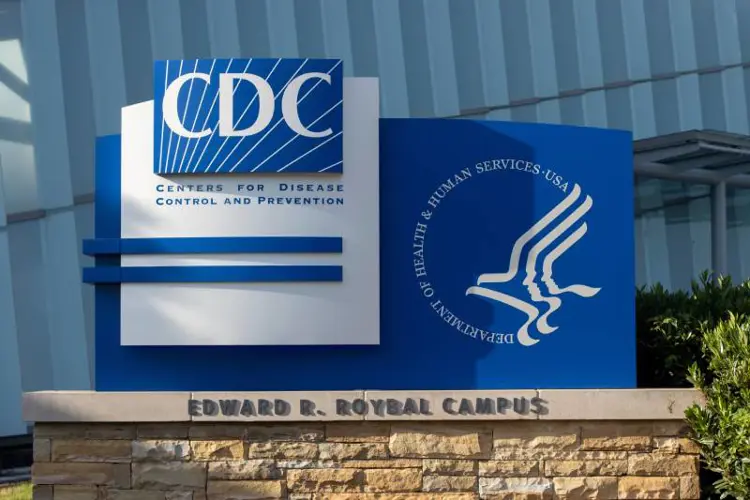The FDA’s Real Cost anti-tobacco campaign has been attacking vapes and vapers for almost six years now, beginning with the 2018 “Epidemic” ad, a tribute to chemophobia that featured a school full of vape victims with invisible worms crawling under their skins.
Since then, the agency has hired high-priced advertising execs to claim vaping “magically” turns vapers into smokers, engage in old-fashioned Drug War-style stigma, and collaborate with Marvel Comics to portray vaping as a form of “mind control.”
It’s back to chemophobia this year, with a (so far) short series of ads featuring the original chemical vaping villain: formaldehyde.
Formaldehyde: the first anti-vaping research fad
It’s been nine years since a research letter to the New England Journal of Medicine launched the first anti-vaping research fad: using methodological tricks (or mistakes if you’re feeling charitable) to produce “dangerous levels” of formaldehyde and other carbonyls from open-system vaping setups.
The formaldehyde craze happened because it was (and is) easy to produce high-carbonyl vapor by using a mod set at very high voltage settings, which overheats or burns the wick and liquid and delivers unvapeable vapor. Another trick (mistake) is to take weak draws on a sub ohm tank that requires rapid, high-volume air flow to deliver reasonable cool vapor.
Cardiologist and vape researcher Konstantinos Farsalinos—who had identified the “formaldehyde problem” immediately—eventually co-authored (with chemist Gene Gillman) a systematic review of 32 “formaldehyde studies,”describing the pitfalls of the research and creating useful research guidelines. Farsalinos concluded that, when “realistic use conditions were ensured, carbonyl emissions from e-cigarettes were substantially lower than tobacco cigarette smoke,” and that modern vaping atomizers “appeared to emit minimal levels of carbonyls with questionable clinical significance in terms of health risk.”
The FDA loves scary-sounding chemicals
When used as intended, vapes don’t produce dangerous levels of formaldehyde. When they do contain it, it’s because the vapor is so overheated it’s caustic to users and repulsive to inhale. The FDA knows all that. But why let scientific facts get in the way of a good TV commercial?
There are three versions of the Real Cost formaldehyde ad—all featuring appropriately hideous taxidermied animals watching a young vaper standing outside the taxidermy shop. With wired-together jaws and rotting teeth, they don’t look very healthy, but the vaping teenager is the one in real trouble.
“Hey, did you know that kid is vaping the same toxic chemical that’s used in taxidermy—formaldehyde?” asks the wise dead wolf. The other dead animals have a hard time pronouncing the name of the chemical and wacky hijinks ensue.
There’s a taxidermy-free ad too, perhaps aimed at kids with more delicate sensibilities. In that one, sewage leaks from an open pipe into a pond, while a narrator compares the “beautiful and fragile ecosystem” to human lungs. “When you vape,” he says, “you may be exposing yourself to toxic chemicals. Are you polluting yourself?”
FDA: adults are immune to Real Cost half-truths
The FDA, of course, insists that its anti-vaping screeds are strictly targeted at youth—as though such a thing is even possible in the internet age. Last year, Center for Tobacco Products (CTP) Director Brian King told the audience at an American Vapor Manufacturers Association (AVM) online event that the ads have been “rigorously evaluated” both before and after they aired.
But a 2022 study published in the journal Nicotine & Tobacco Research found that, for adult smokers who viewed them, the FDA Real Cost ads “resulted in overall more negative expectancies about e-cigarettes,” including reduced motivation to switch from smoking to vaping.
Although adult Real Cost ad viewers believed e-cigarettes were “significantly less harmful (in general) than combustible cigarettes” before watching the ads, they changed their minds and decided the two products were “comparably harmful” after viewing.
Both adults and kids would benefit from an honest ad campaign that explained the actual risks of vaping for non-smokers, and the potentially huge benefits for people who do smoke. But, despite occasionally admitting that vaping is less harmful than smoking and referring to the nicotine product “continuum of risk,” FDA leaders tasked with educating the public about tobacco have never seen the need to tell the whole truth about vaping and non-combustible nicotine products.
Image courtesy YouTube.
The Freemax REXA PRO and REXA SMART are highly advanced pod vapes, offering seemingly endless features, beautiful touchscreens, and new DUOMAX pods.
The OXVA XLIM Pro 2 DNA is powered by a custom-made Evolv DNA chipset, offering a Replay function and dry hit protection. Read our review to find out more.
The SKE Bar is a 2 mL replaceable pod vape with a 500 mAh battery, a 1.2-ohm mesh coil, and 35 flavors to choose from in 2% nicotine.
Because of declining cigarette sales, state governments in the U.S. and countries around the world are looking to vapor products as a new source of tax revenue.
The legal age to buy e-cigarettes and other vaping products varies around the world. The United States recently changed the legal minimum sales age to 21.
A list of vaping product flavor bans and online sales bans in the United States, and sales and possession bans in other countries.


















